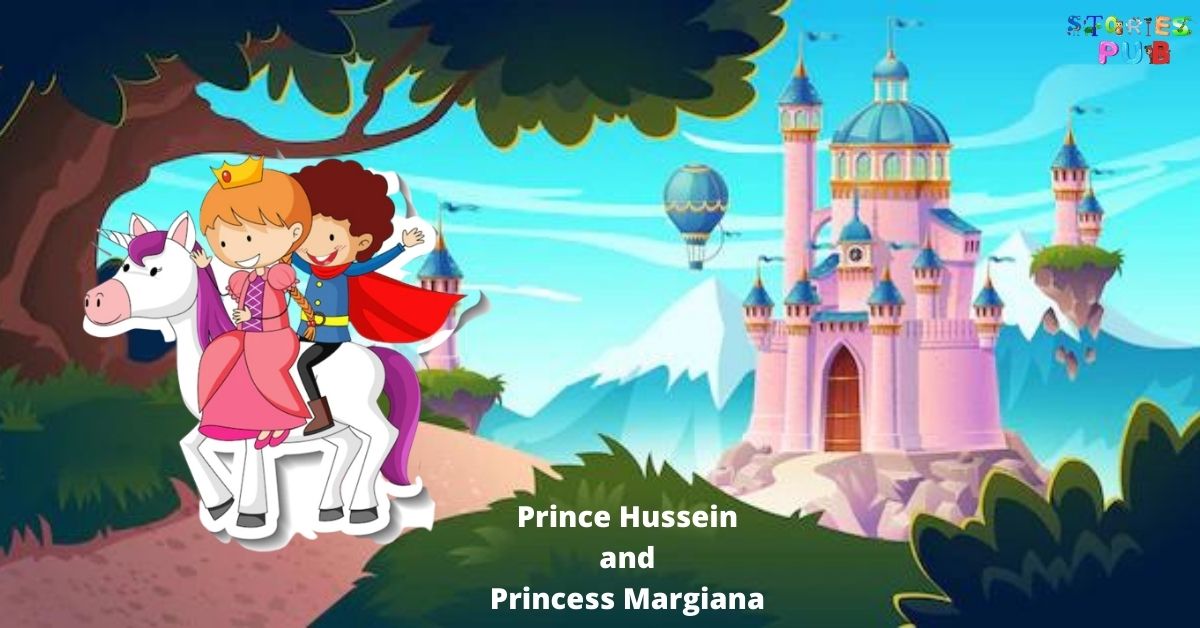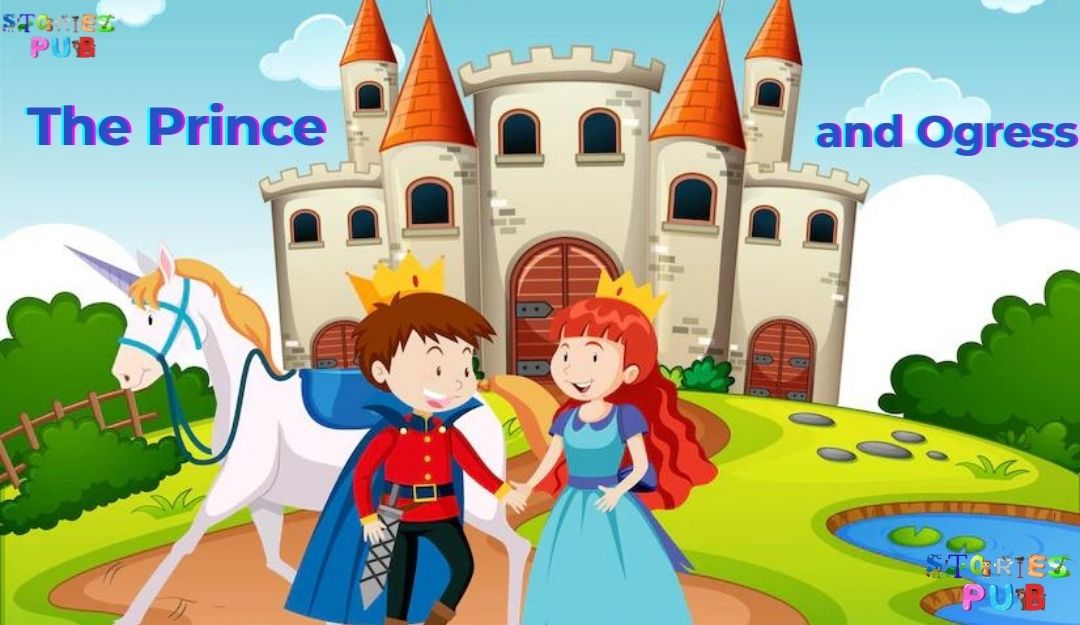
In the ever-evolving tapestry of science and technology, there exist luminaries whose brilliance transcends generations. Among these luminaries, Ada Lovelace’s name shines like a guiding star, illuminating the path of innovation and reshaping the contours of history. With a legacy intertwined with the birth of computer programming, Ada Lovelace remains a beacon of inspiration in the digital age.
Ada Lovelace‘s biography unfolds a captivating tale of a woman whose intellectual prowess defied the conventions of her time. Born in the early 19th century, Ada Lovelace’s remarkable journey was characterized by a relentless pursuit of knowledge and an insatiable curiosity about the world around her. In an era when opportunities for women in science were scarce, she blazed a trail that would set the course for future generations.
Her genius found its canvas in collaboration with the eminent Charles Babbage, a visionary inventor of his time. This collaboration birthed the Analytical Engine, a precursor to the modern computer, and marked the inception of Ada Lovelace’s monumental contributions.
She recognized not only the potential of this engine but also the significance of what we now know as computer programming. In an unprecedented feat, she crafted the first algorithm, a testament to her unparalleled insight into the realm of digital manipulation.
As the ink of history continues to immortalize her, Ada Lovelace stands as the world’s first computer programmer, a title etched in the annals of scientific achievement. Her visionary legacy has cascaded through time, culminating in the digital era we inhabit today.
With each keystroke, each algorithm executed, and each line of code written, her influence resonates, reminding us that innovation knows no bounds and that a woman ahead of her time could sculpt the future of technology.
The Ada Lovelace biography is a journey into the heart of brilliance, a testament to the transformative power of human ingenuity, and an ode to a trailblazer who dared to dream beyond the limitations of her era.
Personal and Professional Details
| Aspect | Details |
| Full Name | Augusta Ada King, Countess of Lovelace |
| Birth Date | December 10, 1815 |
| Birthplace | London, United Kingdom |
| Parents | Lord Byron (Father), Anne Isabella Milbanke (Mother) |
| Education | Privately educated in mathematics and science |
| Notable Contributions | Pioneer of computer programming and algorithms |
| Association | Collaborated with Charles Babbage on Analytical Engine |
| Key Insight | Recognized the need for instructions to manipulate symbols and numbers |
| Legacy | Considered the world’s first computer programmer |
| Significance | Laid the foundation for modern computer science |
| Passing Date | November 27, 1852 |
| Place of Death | London, United Kingdom |
Early Life and Education: Nurturing the Seeds of Brilliance
Ada Lovelace’s journey began amidst the vibrant tapestry of the 19th century, where her birth in London on December 10, 1815, would mark the emergence of a prodigious mind that would leave an indelible mark on the world of science and technology. Born Augusta Ada Byron, she was the only legitimate child of the renowned poet Lord Byron and Anne Isabella Milbanke, a mathematician and intellectual powerhouse in her own right.
However, the tempestuous marriage between her parents faced challenges, and her father’s poetic pursuits led to their separation shortly after Ada’s birth. This separation also played a role in shaping Ada’s unique trajectory, as her mother sought to shield her from the alleged erratic nature of her father’s artistic temperament.
Ada’s upbringing was marked by her mother’s determination to counter the perceived influence of Lord Byron’s poetic inclinations. Recognizing the value of mathematics and reason, Ada’s mother immersed her in a rigorous education, emphasizing logic and scientific exploration. This nurturing environment ignited a spark within young Ada, fostering her innate curiosity and analytical thinking.
As a result, Ada Lovelace’s early education was a harmonious blend of the arts and sciences, positioning her as a true polymath. Her exposure to scientific circles through her mother’s connections enriched her intellectual landscape. It was in this atmosphere that Ada encountered the works of mathematicians and scientists, allowing her to cultivate a deep fascination for the abstract world of numbers and patterns.
Her alliance with fellow mathematician Charles Babbage proved to be a pivotal juncture in her life. Through their correspondence and collaboration, Ada’s profound understanding of mathematics blossomed. She not only grasped the intricacies of Babbage’s revolutionary designs, such as the Difference Engine and the Analytical Engine but also began to envision their potential applications in computation.
Ada Lovelace’s formative years set the stage for her meteoric rise in the world of science, fueled by an education that spanned the artistic and the analytical and fostered by a mother who championed her intellectual growth. As her understanding of mathematics evolved, the world awaited the unveiling of her remarkable legacy—one that would illuminate the uncharted realms of computer programming and forever alter the trajectory of human progress.
Collaboration with Charles Babbage: Pioneering the Future of Computing
The convergence of two brilliant minds in the early 19th century would give rise to an extraordinary partnership that would shape the foundations of modern computing. Ada Lovelace’s association with Charles Babbage, often referred to as the “father of the computer,” forged a bond that transcended their time, culminating in visionary insights that continue to reverberate through the corridors of technological advancement.
Charles Babbage’s grand vision extended to the creation of mechanical devices capable of automating complex calculations—an endeavor that led to the conception of the Analytical Engine.
This remarkable invention was designed to perform not only mathematical computations but also to execute logical operations—a tantalizing precursor to the digital computers of today. Amidst Babbage’s intricate machinery, Ada Lovelace discerned the latent potential that would reshape the course of history.
Ada Lovelace’s biography is intricately interwoven with her visionary interpretation of the Analytical Engine’s capabilities. In her extensive notes accompanying an article on Babbage’s work, she surpassed the realm of mere calculation and dared to envision a machine that could transcend numbers.
Ada foresaw that this engine, driven by punch cards and gears, had the capacity to process any form of information, even extending to music and art. Her insight, ahead of its time, laid the foundation for the concept of a universal computing machine.
Ada’s true genius, however, lay in her conceptualization of an algorithm—a sequence of instructions—designed explicitly for the Analytical Engine. Her notes included what is now recognized as the world’s first computer algorithm, intended to calculate Bernoulli numbers.
This groundbreaking step was more than a formula; it was a paradigm shift that conceptualized the notion of programming itself. Ada Lovelace’s algorithmic approach envisioned a machine that could perform operations beyond arithmetic, foreshadowing the immense capabilities of modern computers.
While the Analytical Engine remained unrealized during their lifetimes, Ada Lovelace’s insights transcended the constraints of the era, embracing a vision that resonates with the digital age. Her collaboration with Charles Babbage proved to be a harmonious fusion of mathematical brilliance and imaginative foresight, birthing the seed of computer programming that would later flourish into a global revolution.
Analytical Engine and First Algorithm: Forging a New Frontier in Computing
Amidst the gears, cogs, and intricate mechanisms of the Analytical Engine, Ada Lovelace saw not just a mechanical contraption, but a portal to a world of limitless possibilities—a world where mathematics met machinery, and imagination gave birth to the extraordinary. Her profound understanding of the Analytical Engine’s potential transcended the constraints of her era, propelling her into the annals of history as the trailblazer of computer science.
Ada Lovelace’s biography unveils a pivotal moment where Ada’s visionary insights converged with the burgeoning world of computation. As the intricacies of the Analytical Engine unfurled before her, she recognized that its capabilities extended beyond mere number-crunching.
Ada perceived the Engine’s ability to manipulate symbols and process information, a groundbreaking revelation that foreshadowed the very essence of modern computing—manipulation of binary code.
Her collaboration with Charles Babbage crystallized in her creation of an algorithm, a sequence of instructions intended to guide the Analytical Engine’s operations. Her notes accompanying the algorithm for calculating Bernoulli numbers not only encapsulated the essence of programming but also signaled the birth of computer science.
Ada’s vision reached beyond the immediate, as she mused that the Engine’s potential could extend to composing music and generating art—a prophetic nod to the multifaceted applications of contemporary technology.
Ada Lovelace’s algorithm wasn’t merely a mathematical formula; it was a leap of innovation that defied the boundaries of her time. Her insights underscored the intrinsic link between mathematics and computing, paving the way for a symbiotic relationship that would forever transform the landscape of technology. Her creation, known as the “Note G,” laid the foundation for generations of programmers to come, crystallizing her status as the world’s first computer programmer.
In a world where computers were yet to take physical form, Ada Lovelace’s brilliance illuminated the path to a future where algorithms and machines would weave a seamless tapestry.
Her analytical prowess, entwined with visionary imagination, sculpted the very essence of programming—crafting a blueprint for innovation that resonates through the corridors of time. The Analytical Engine’s gears may have remained still, but Ada Lovelace set in motion a revolution that continues to accelerate, transforming the world as we know it.
Did Ada Lovelace Invent the Computer? Unraveling Her Trailblazing Role
The realm of technological history often shrouds Ada Lovelace in a cloak of curiosity: did she, in fact, invent the computer? The answer, while not a resounding affirmation, unveils a narrative of profound significance—a narrative that speaks to her visionary insights and transformative contributions to the world of computing.
Ada Lovelace’s biography weaves a tale of innovation that defies the conventional boundaries of invention. While Ada did not physically invent the computer in the modern sense, her intellectual legacy stands as the cornerstone upon which the edifice of modern computing rests. Her role was not one of building the machine, but rather of conceiving the paradigm of computer programming and algorithms—a concept as groundbreaking as the computer itself.
Ada Lovelace’s pioneering partnership with Charles Babbage, the architect of the Analytical Engine, signifies her pivotal role. As the gears of the Engine turned in her imagination, she envisioned an abstract world where numbers, symbols, and operations could intertwine to create unprecedented possibilities. Her notes accompanying the Analytical Engine’s designs transcend mere mathematical calculations; they encompassed the birth of computer programming.
Ada’s creation of the first algorithm—the sequence of instructions that guide a computer’s operations—formed the cornerstone of her legacy. This innovation went beyond arithmetic; it encompassed the manipulation of symbols, a feat that resonates with modern programming languages. She foresaw the Engine’s potential to extend beyond mathematics, with applications in music, art, and beyond—a prescient vision that encapsulated the all-encompassing essence of computing.
While Ada Lovelace did not invent the computer, her insights were the catalyst that initiated the cascade of innovation leading to the digital revolution. Her conceptualization of algorithms, programming, and the Analytical Engine’s potential laid the groundwork for the modern computer. Her legacy transcends physical creation; it resides in her visionary understanding of the marriage between mathematics and machinery.
In the grand tapestry of technological evolution, Ada Lovelace occupies a unique and revered position. Her contributions resound as the heralds of a new era, where numbers and imagination intertwine to shape a future beyond comprehension. Ada Lovelace’s biography is a testament to the fact that invention takes myriad forms—one of which is the transformative power of visionary thought.
Ada Lovelace’s IQ: A Brilliance Beyond Measurement
The quest to quantify intelligence through IQ scores is a contemporary pursuit, a practice that didn’t traverse the corridors of time to Ada Lovelace’s era. Thus, we find ourselves standing at the threshold of an enigma—wondering about the numerical value that could encapsulate the genius of a woman who defied the limits of her time and illuminated the path of mathematics and science.
Ada Lovelace’s biography takes us on a journey where intelligence transcends the constraints of metrics. Born in the early 19th century, Ada’s brilliance bloomed in an era that appreciated the intricate tapestry of knowledge woven by the human mind but did not seek to quantify it within a numerical parameter. Her contributions to mathematics and science resided in the depth of her insights, the richness of her imagination, and the fervor with which she explored uncharted territories.
While Ada Lovelace’s IQ remains veiled in historical obscurity, her exceptional intelligence is unequivocally documented through her accomplishments. Her early exposure to mathematics and science, guided by her mother’s tutelage, unveiled a natural affinity for the abstract and the analytical. Ada’s mind was a kaleidoscope of mathematical patterns and scientific curiosity, a landscape where imagination merged seamlessly with logic.
Her visionary partnership with Charles Babbage further attested to the depth of her intellect. Ada’s understanding of Babbage’s groundbreaking inventions, particularly the Analytical Engine, demonstrated a profound comprehension of mathematical concepts that few could fathom. Her creation of the first algorithm for the Engine underscored her capacity to navigate the complexities of computation—an endeavor that required not just intelligence, but also a pioneering spirit.
Ada Lovelace’s legacy echoes through history as a testament to the boundless capabilities of the human intellect. Her contributions spanned the realms of mathematics, technology, and imagination—a trifecta that defined her as an intellectual luminary.
While her IQ score remains a mystery, her impact remains imprinted on the very fabric of modern computing and the fields she touched. In a world that strives to quantify intelligence, Ada Lovelace reminds us that the true measure of brilliance transcends numbers—it resides in the transformative power of thought and the indomitable spirit of exploration.
How Did Ada Lovelace Discover Code? Unraveling the Threads of Innovation
In the labyrinthine realm of Ada Lovelace’s genius, the discovery of code was not an unearthing of secrets, but a journey of insight and imagination—a voyage that would chart the course of modern computing. Ada Lovelace’s biography navigates the contours of her mind, unveiling how she harnessed the power of code to weave the fabric of a new era.
Ada’s voyage began with the intricate designs of Charles Babbage’s Analytical Engine, a mechanical marvel that promised to transcend the confines of arithmetic calculations. Amidst the gears and levers of this visionary contraption, Ada discerned a critical realization: for the Engine to execute operations beyond numerical calculations, a language of instructions was needed—a language that would guide the manipulation of symbols and numbers, akin to a conductor guiding an orchestra.
In the tapestry of the Analytical Engine’s potential, Ada saw the threads of code waiting to be woven. Her understanding was not confined to mathematical equations but encompassed the essence of symbolic manipulation—an insight that echoed the principles of modern programming. Ada recognized that to actualize the Engine’s full potential, a bridge needed to be built between the abstract world of mathematics and the mechanical realm of the machine. This bridge was code.
Ada Lovelace’s insight extended beyond mere mathematical operations. She envisioned a code that could orchestrate a symphony of operations, instructing the Engine to perform complex tasks by manipulating symbols and numbers. Her notes accompanying the Analytical Engine’s designs not only encapsulated the concept of code but also laid the groundwork for the world’s first algorithm—a sequence of instructions that would guide the Engine’s actions.
While Ada’s code may not resemble the languages of contemporary programming, her understanding was unequivocally revolutionary. She grasped that to communicate with machines, a structured language was essential—a language that could translate human thought into machine action. Her discovery of code wasn’t a matter of happenstance; it was an astute recognition of the need for a linguistic bridge that would connect the realm of imagination with the mechanics of computation.
In the annals of computing history, Ada Lovelace’s discovery of code stands as a beacon of innovation—a testament to the symbiotic relationship between human insight and technological advancement. Her pioneering vision bridged the gap between abstraction and execution, setting the stage for the intricate dance between humans and machines that defines the modern digital landscape.
Conclusion: Ada Lovelace’s Enduring Legacy in the Tapestry of Innovation
The canvas of history is adorned with the strokes of genius, and at its heart stands Ada Lovelace—a luminary whose legacy radiates across the annals of time, igniting the realms of science and technology with unparalleled brilliance. As we traverse the landscape of Ada Lovelace’s biography, we find ourselves enveloped in the story of a visionary mind that forever altered the course of modern innovation.
Ada’s journey was one of convergence—where mathematics, imagination, and mechanical ingenuity converged in a symphony of transformation. Her understanding of the Analytical Engine’s potential, her creation of the first algorithm, and her visionary insight into the language of code were threads woven into the fabric of the digital age.
While Ada Lovelace did not invent the computer in the conventional sense, her legacy was the invention of a paradigm—an innovation of thought that laid the foundation for the complex systems powering our world today. Her contributions to the field of computer science transcend mere computation; they encompass the fusion of human creativity and technological evolution.
Ada Lovelace’s legacy is the embodiment of the symbiotic relationship between human intellect and machines. Her visionary insights continue to echo through the corridors of modern technology, guiding the development of artificial intelligence, programming languages, and the very algorithms that drive our interconnected world.
In the symphony of innovation, Ada Lovelace’s composition remains a timeless melody—an anthem that resonates with the aspirations of future generations. Her journey inspires us to transcend boundaries, explore uncharted territories of thought, and understand that invention is not confined to the realm of physical creation—it resides in the power of ideas and the tenacity to bring them to life.
As we bid adieu to the remarkable tale of Ada Lovelace, we find ourselves standing on the precipice of limitless potential. Her legacy is a beacon that illuminates our path—an enduring testament to the fact that the union of human intellect and technological prowess can shape the world in ways that redefine the boundaries of possibility.
Hey kids, how much did you like Ada Lovelace Biography: Pioneering Visionary in Computing? Please share your view in the comment box. Also, please share this story with your friends on social media so they can also enjoy it, and for more such biography, please bookmark storiespub.com.
Suggested Biography –
Ada Lovelace FAQs
Who was Ada Lovelace?
Ada Lovelace, born in 1815, was a pioneering mathematician and writer known for her work on Charles Babbage's early mechanical general-purpose computer, the Analytical Engine. She is often considered the world's first computer programmer.
What is Ada Lovelace's contribution to computer science?
Ada Lovelace's most significant contribution was her creation of the first algorithm for Charles Babbage's Analytical Engine. This algorithm marked the beginning of computer programming and laid the foundation for modern computer science.
How did Ada Lovelace envision the future of computers?
Ada Lovelace's visionary insights extended beyond calculations. She believed that computers could go beyond arithmetic tasks, predicting they could create music, art, and more. Her ideas foreshadowed the capabilities of modern computers.
Did Ada Lovelace invent the computer?
While Ada Lovelace didn't invent the computer itself, she made groundbreaking contributions to computer programming. Her insights and algorithms were foundational to the development of computers as we know them today.
What was Ada Lovelace's collaboration with Charles Babbage?
Ada Lovelace collaborated closely with Charles Babbage, an inventor and mathematician. She translated and annotated an article about Babbage's Analytical Engine, and her notes contained the first algorithm designed to be processed by a machine.
How did Ada Lovelace's insights influence modern technology?
Ada Lovelace's insights laid the groundwork for modern computing and coding. Her visionary ideas and understanding of algorithms paved the way for the computer revolution, influencing software development and technology advancements.
What was Ada Lovelace's educational background?
Ada Lovelace received a well-rounded education in mathematics, science, and the arts, guided by private tutors and mentors. Her upbringing exposed her to a wide range of intellectual pursuits.
What is Ada Lovelace Day?
Ada Lovelace Day is an annual celebration of the achievements of women in science, technology, engineering, and mathematics (STEM). It aims to raise awareness about gender diversity in these fields and honor Ada's contributions.
How did Ada Lovelace's legacy impact women in STEM?
Ada Lovelace's legacy serves as an inspiration for women in STEM fields. Her pioneering work underscores the potential of women in technology and continues to motivate and empower the next generation of female scientists and engineers.
What can we learn from Ada Lovelace's life and work?
Ada Lovelace's life teaches us the power of visionary thinking, the intersection of creativity and science, and the importance of pushing boundaries. Her legacy reminds us that innovation knows no gender and that ideas can shape the world for generations to come.



















